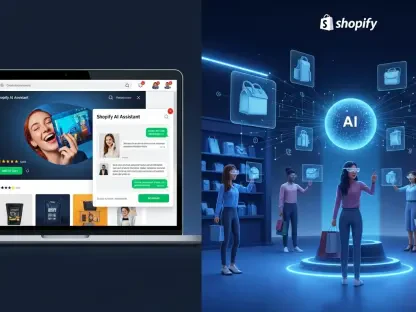The evolution of artificial intelligence has made a profound impact across various sectors, but perhaps one of the most intriguing and potentially disruptive areas is corporate hiring. AI-generated identities, particularly those created using advanced techniques like deepfake technology, are reshaping the hiring landscape in ways that were previously unimaginable. Deepfakes employ artificial intelligence to create incredibly realistic yet false personas, which can effectively deceive even the most seasoned HR professionals. This digital deception poses significant challenges for companies, especially within remote work environments where traditional, face-to-face verification methods are absent. As the remote work trend continues to expand, so does the threat of identity fraud perpetrated by sophisticated AI technologies. Corporations around the world now face the arduous task of validating candidate identities in a digital setting, which raises questions about the effectiveness of existing verification processes and what innovations might be necessary to keep pace with technological advancements. This unfolding scenario demands an urgent reevaluation of hiring practices to ensure authenticity and integrity in candidate evaluation.
The Challenge of Deceptive AI in Hiring
The rapid progression of AI technologies has ushered in complex challenges for corporate hiring departments tasked with verifying candidate identities. One significant challenge is the emergence of AI-generated fake candidates who possess the tools to navigate, and often bypass, current credential verification systems. These false candidates can create promotional video resumes, manipulate digital interviews, and present counterfeit qualifications, all with a precision that makes them virtually indistinguishable from genuine applicants. As businesses increasingly rely on digital communication for hiring due to the prevalence of remote work, distinguishing real candidates from digital imposters becomes substantially more difficult. The stakes are amplified by the high potential costs of hiring a fraudulent candidate, such as financial loss, reputational damage, and operational disruptions. The evolution of this threat necessitates not only awareness but also a comprehensive overhaul of the methods used to validate candidate identities.
Generative AI, the backbone of much of this deception, utilizes machine learning to produce realistic human likenesses in both visual and textual formats. This capability extends beyond mere identity and influences personality traits, work history, and skill sets. Such advanced capabilities demand equally advanced detection tools and processes within the hiring workflow. Companies are often ill-prepared to differentiate between genuine and AI-generated applicants due to outdated methods rooted in the assumption that candidate identities, rather than solely their credentials, are legitimate. As the tools and techniques for identity forgery advance, corporate hiring practices must pivot to adopt cutting-edge technologies and strategies that can adequately counteract these sophisticated threats.
Strategies to Combat AI-Generated Fraud
To address growing concerns associated with AI-generated identities, leading tech firms and identity verification providers are conducting innovative research and development. Companies like Persona have adopted a pioneering approach featuring a multilayered detection strategy. This approach involves analyzing various aspects of a candidate’s submission, not just the information presented in resumes or interviews. These technologies assess the authenticity of videos and photos submitted by candidates, scrutinizing metadata such as the device and network from which these submissions originate, alongside behavioral analytics that may reveal patterns indicative of coordinated fraudulent activity.
Such comprehensive identity validation frameworks are crucial in a landscape where a single security layer may prove insufficient. The sophistication of AI-generated identities demands a multi-pronged approach that can adapt to the evolving nature of digital scams. Leading verification systems are designed to detect inconsistencies that might be overlooked in a superficial analysis. Furthermore, seamless integration with existing infrastructure is vital; systems like those developed by Persona can be rapidly deployed across enterprises, enabling real-time analysis and feedback during the hiring process. Swift integration allows companies to manage the verification process efficiently, addressing any red flags that may arise during candidate evaluations without compromising the speed or integrity of the hiring decision.
Enhancing Identity Verification in a Remote World
The global shift toward remote work has undeniably heralded a new era of flexibility and opportunity in talent acquisition. However, it simultaneously presents a Pandora’s box of security challenges related to identity verification. Traditional methods relied heavily on in-person interviews and physical document verification, offering a level of certainty that online protocols struggle to replicate. Without the benefit of face-to-face interaction, remote hiring processes can miss critical context and cues, opening the door for AI-generated identity fraud to flourish. As reliance on virtual hiring processes grows, so does the need for advanced, technology-driven verification solutions to bridge these gaps.
Organizations now find themselves at a crossroads, where they must reassess legacy systems and processes to effectively address these contemporary threats. This reassessment involves a closer look at how identity verification can evolve from checking post-identity credentials to implementing proactive, real-time assessment tools capable of confirming a candidate’s authenticity from the outset. Collaboration between corporations and technology service providers is essential to fostering solutions that are not only effective but also seamless and user-friendly, minimizing disruptions to the onboarding process while maximizing security. By employing comprehensive tools that encompass biometric detection and AI-driven fraud recognition, companies can create an environment that is more resilient to identity fraud while preserving the advantages of remote work dynamics.
Looking Forward: The Future of Hiring Practices
The swift advancement of AI technologies poses intricate challenges for corporate hiring departments, especially when it comes to verifying candidate identities. Among these challenges is the appearance of AI-generated fake candidates who can skillfully navigate and often circumvent current credential verification systems. These imposters utilize tools to create promotional video resumes, alter digital interviews, and present fake qualifications with such precision that they become nearly indistinguishable from actual applicants. As companies increasingly depend on digital hiring practices due to remote working trends, distinguishing genuine candidates from AI-generated ones becomes significantly harder.
The implications of hiring such fraudulent candidates are severe, leading to potential financial losses, reputational harm, and operational disturbances. This evolving threat requires not just awareness but a major revamp of the methods used to verify candidate identities. Generative AI, the core of these deceptions, leverages machine learning to replicate realistic human features in both visual and textual forms, extending even to personality traits, employment history, and skills. Due to outdated methods that assume candidate identities are legitimate, companies find themselves unprepared to identify real applicants from AI-generated ones. Therefore, it’s imperative that corporate hiring practices adapt by incorporating innovative technologies and strategies to effectively counter these advanced threats, ensuring the credibility of their recruitment processes.









